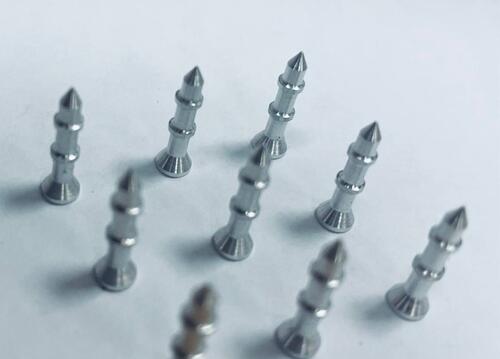Scientists from NUST MISIS have created a methodology that can become the basis of a fundamentally new method of antibacterial therapy. It has broad opportunities for use in dentistry, maxillo facial surgery, the treatment of ENT diseases, and other medical fields. The created oxide nanoparticles of iron, zinc, titanium, and other metals in dental materials have a unique property: they work as antibiotics without side effects.
The basis of the proposed research results are liquid colloidal systems (ultrathin suspensions that do not precipitate), synthesized at NUST MISIS, consisting of high-energy oxide nanoparticles of iron, zinc, titanium, and other metals, ranging from 1 to 3 nm.
The fundamental problems that dentists face when installing fillings are the active formation of pathogenic bacteria colonies at the junction of the filling material and dentin (tooth tissue under the enamel) of the tooth, as well as the formation of microcracks and microcavities in the technical placing of the filling. A common phenomenon to many patients occurs when a filling will drop out, revealing even more tooth decay than before the original treatment. Even if every technological procedure is observed at the border of the filling, a micro gap can be formed over time, where microorganisms proliferate. A complicating factor is that the tooth dentin is a hydrophilic (water-wetting) material, and the filling, on the other hand, consists of hydrophobic (water repellent) substances.
The research conducted by the research team showed that despite the ultra-low concentration of metals contained in disperse systems — no more than 0.1 mg/l, i.e.
Nowadays, there is the problem in medicine to find fundamentally new drugs with high antibacterial activity, which would reduce the resistance of pathogenic microorganisms to natural and medicinal antibiotics. “We assume that the mechanism of microbial cell destruction under the effect of colloidal nanosystems, created by us, resembles the effect of antibacterial enzymes of the hydrolase class, which destroy the bacterial walls through hydrolysis. Such enzymes in relatively high concentrations are contained in the places of body contact with the environment — saliva, mucus from the nasopharyngeal cavity and gastrointestinal tract, human milk. Their action leads to the process of lysis (destruction of cells into fragments) and the death of the pathogenic cell. Apparently, nanoparticles of metal oxides act as a catalyst for hydrolases, which eventually leads to the destruction of peptide and glycosidic bonds of cell walls and membranes. Under their action, the mechanism of ‘self-destruction’ of pathogenic bacteria starts. At present, the composition is used at the Dental Department of Kirov State Medical Academy,” — said Georgii Frolov, Head of the Scientific Group and Associate Professor in the Physical Chemistry Department of NUST MISIS.
The obtained nanoparticles in dental materials have a unique property — they work as antibiotics, but without side effects, that is, they inhibit the development of pathogenic microorganisms, while at the same time the research shows that in most cases they do not inhibit the vitals of natural flora or affect the cells of body tissues. Via material received, the scientific team solved the long-standing problem of the “spending” of antibacterial composition, which reacts chemically and is actually spent, alongside being impossible to add to a filled tooth. The new composition has an everlasting effect once the filling goes on the tooth, which is a major advantage.
“The research results of the NUST MISIS scientists is in fact a technological revolution in dentistry, as it represents dental composites of the new, sixth generation. At the edge of the phase separation, this material creates a bactericidal effect limitless in time, and improves the adhesion of the filling with the tooth tissue by more than 40%. Antibacterial additive can be used not only in the composition of the filling, but also in the adhesive, in composites, etching materials, interlayers, implants, and in the compounds for sealing dental fissures. In all formats, it creates a surface and volume antibacterial effect in the operated areas and ultimately prolongs the life of the fillings and implants. Our clinic has successfully used the drug ‘Estelux-NK’ since September 2016”, — Project Participant, and Head Physician of the clinic “Rosdent,” Ph.D. Yakov Karasenkov emphasized.
The comprehensive studies launched in 2014 are an example of effective public-private partnership in the field of introducing innovative new technologies. A key customer and co-investor of the development is one of the largest domestic manufacturers of dental materials, StomaDent, LLC, which has already produced innovative dental composites based on the developed products. The composite filling nano-hybrid material “Estelux-NK” was registered by Roszdravnadzor in 2016. The Ministry of Education and Science of the Russian Federation became a co-investor of the project and financed 50% of the exploratory research’s cost through the Federal Target Program “Research and development in priority areas of development of the Russian research complex”.






